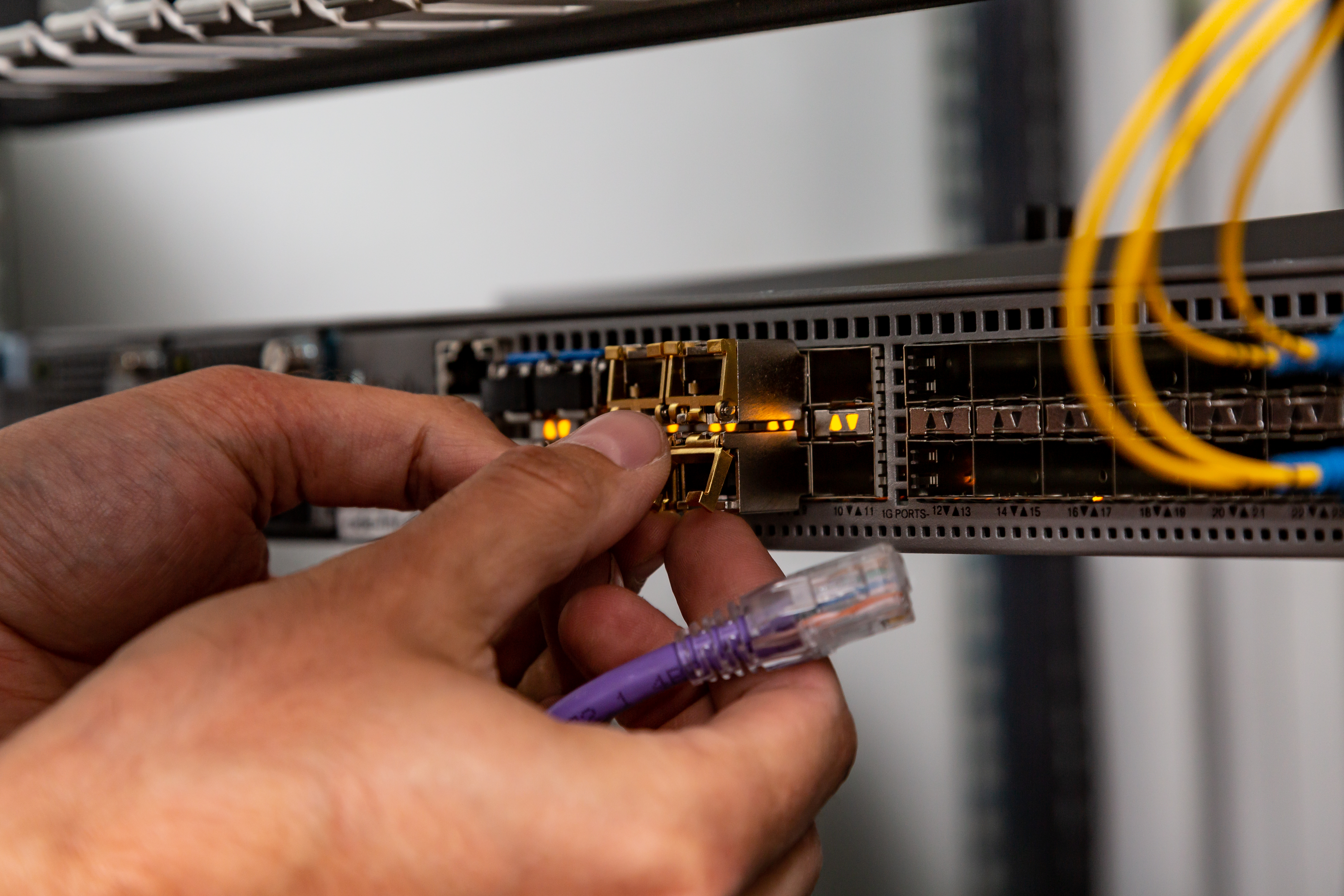What is an optical transceiver?
An optical transceiver, sometimes called a fiber optic transceiver, is an interconnect component that can transmit and receive data. It consists of two main parts: a transmitter and receiver. This critical component uses fiber optic technology to convert electrical signals to light signals and vice versa.
Optical transceivers are used in most industries, and they are of utmost importance in telecom applications due to their ability to transport high levels of data over a network. This versatile component can either be plugged into or embedded into a network device. They come in a variety of shapes and sizes. Different types of optical transceivers are defined by form factors.
Radiall offers a range optical transceiver form factors that are ideal for harsh environments. They provide high performance and reliability to a wide variety of applications.
Optical Transceiver Design
The design of optical transceivers has to balance several factors. For instance, engineers want to reduce the size and weight of equipment while maximizing the communication between networks. As engineers add more and more features to telecom applications, space becomes a valuable commodity. Their functionality also requires higher data bandwidth and power, increasing the high levels of data that is transferred at any given time.
Radiall products provide spacious solutions, faster transmission and lower data loss. Our fiber optics are made from drawn glass, offering a flexible and lightweight design. Additionally, since they are non-metal, fiber optics are immune to electromagnetic interference and electrical noise in the environment.
Radiall’s Optical Transceivers
These products operate in a large temperature range (-40 to +90° C) and are available with a variety of options. There are several package options offered including, surface mount, pluggable and multi-source agreements as well as specific custom packages which cover bit rates up to 10 Gbps.
-
S-Light optical transceivers are among the world's smallest transceivers for severe environment applications. They are the perfect match for endpoint equipment and sensors, where low power consumption and small board real estate are key.
-
D-Light optical transceivers are available in 2, 4 or 12 channel counts. The D-Light family offers the highest channel integration density. This family has been designed for direct integration with high-speed FPGAs and SERDES to enable state-of-the-art data and signal processing applications. The D-Light family is available in 40 Gbps, 120 Gbps and above.
These transceivers are compatible with a broad choice of electrical and optical interfaces, making them suitable for any application that requires high performance and robustness.
If you have questions about our optical transceivers or designing a custom solution to meet your application requirements, book a virtual meeting with a Radiall expert today.


